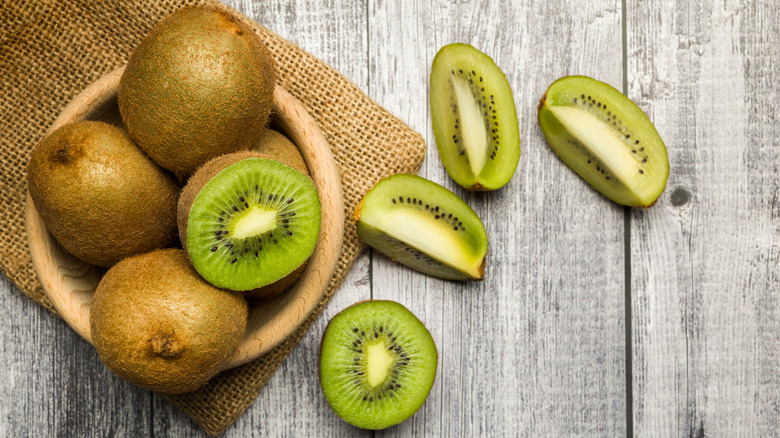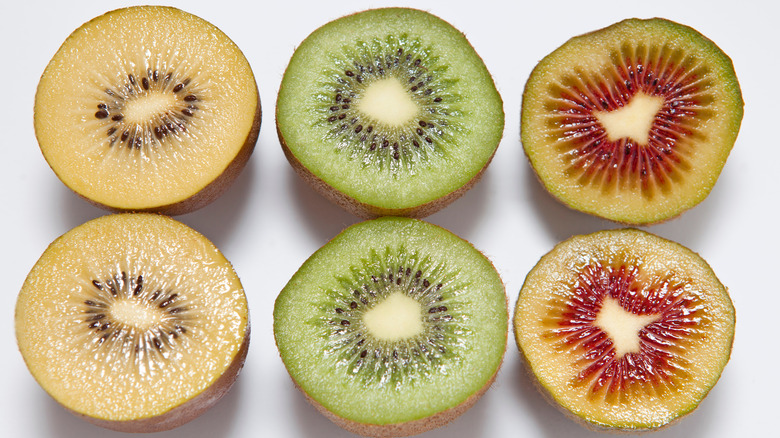Can It Be Dangerous To Eat Kiwi Skin?
The fuzzy skin that covers a vibrantly green and deliciously tart kiwi is often thought of as something that needs to be removed. It's become second nature to carefully discard the peel or even scoop out flesh with a spoon. But is this due to aesthetics or can it be dangerous to eat kiwi skins?
Originally called Chinese gooseberries in English, Time explains that the kiwi hails from mainland China. Following its introduction to New Zealand in 1904, it was dubbed kiwifruit due to its fuzzy appearance that mimics that of the kiwi bird. Interestingly, China remains the top kiwi producer worldwide with New Zealand trailing close behind, reports Statista.
While the most common kiwi you'll see in markets is the slightly furry, brown-fleshed kiwifruit, Michelin Guide reports that there are dozens of varieties like species with a yellow flesh and smooth skin, and even fruit with pink flesh and a berry flavor. Available to North Americans from November through May, Bon Appétit advises that ripe kiwis should be firm with a slight give.
Kiwi peels are edible and healthy
Despite its fuzzy texture, the whole kiwi is edible — seeds and skins included. Especially packed with nutrients, Healthline notes that kiwi peels are rich in antioxidants along with vitamins C and E, which have incredible free-radical fighting benefits.
Eating kiwi skins is also a great source of fiber. When compared to eating just the interior, the European Journal of Nutrition found that eating kiwi skin can raise fiber content by 50%, along with increasing vitamin E and folate by more than 30%. Likewise, Medical New Today also reported that kiwis can aid digestion, acting as a natural laxative.
If you're still not sure about eating kiwi skins, Food52 recommends running a kiwi under water, then using a towel to rub off some of the prickly bits to alleviate any irritation or strange mouthfeel due to the presence of calcium oxalate crystals in the peel. Will you be eating kiwi with the skin from now on?

